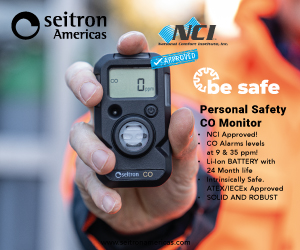This has been a very bizarre winter. We’ve seen rain and snow, tornadoes and blizzards, landslides, mudslides, and snowmaggadon.
But now it’s April and we’ll soon start seeing warmer temperatures, lots of sunlight, longer days, and hopefully, tons of air conditioning calls!
But all those niceties can quickly become not-so-nice during high summer temperatures when you are working on hot rooftops, stuffy crawlspaces, and in unbearable attics.
The U.S. Occupational Safety and Health Administration (OSHA) offers its Heat Illness Prevention program to help guide contractors protect their field service and installation crews while working in the heat. Here are nine things OSHA points out:
- Eat Right: This is just common sense. Your team shouldn’t skip meals or overeat. In high temperature summer weather, its always better to eat light (skip greasy, heavy foods). According to OSHA, its also an excellent idea to drink at least eight ounces of cool water per hour.
- Caffeine is not Your Friend: We all love our coffee in the mornings, but drinking too much on a hot day can cause dehydration. Also, energy drinks and some sodas are full of caffeine. So it’s a good idea to reduce your intake of these beverages on hot days.
- Dress Properly: Are your uniforms short-sleeved and lightweight? Are they made from moisture-wicking material? They should be. And be sure to encourage your team to use sunscreen and wear sunglasses when working outdoors.
- Get Lots of Sleep: OSHA also recommends people get plenty of REM sleep. This is easier said than done during hot weather, but is vital for keeping your people healthy and better able to handle hot indoor and outdoor summer temperatures.
- Stay Healthy: The better physical shape you’re team is in, the better equipped they will be to deal with extreme temperature stress. Extra body fat and underlying health problems will contribute to quickly becoming overheated.
- Self-Check: Every person reacts differently to temperature extremes, so it’s important for techs to pay attention to how they feel. If they become light-headed or dizzy, they should tell someone and find a cool place to rest. Again, drink plenty of water. Also, if possible, try to schedule working hours for your field team close to the coolest part of the day — mornings or evenings.
- Recognize Heat Exhaustion: When you conduct safety training for your team, its a good idea to talk about heat exhaustion. Discuss what it is and its signs. SHA says heat exhaustion signs include fatigue, disorientation, nausea, headache, a rapid heart rate, and clammy skin. These symptoms can quickly escalate to heat stroke if not attended to.
- Recognize Heat Stroke: This is serious. When experiencing heat stroke, a person will have elevated body temperature, loss of consciousness, convulsions, vomiting, and diarrhea. Learn to recognize the signs in yourself and others. Most victims of heat exhaustion and heat stroke won’t recognize it in themselves, so co-workers should watch out for each other. Pay special attention to those over 65 years old, those who are overweight, and those on medications.
- Take Plenty of Breaks: When summer temperatures soar, it’s important to take frequent breaks. They can help with overheating, which is important in avoiding heat exhaustion or heat stroke. Breaks mean getting out of the sun, drinking water, and cooling down.
Your techs are the lifeblood of your business. By taking care of them, they can take care of your customers and your business. So consider these tips and have a profitable and safe summer.













Recent Comments